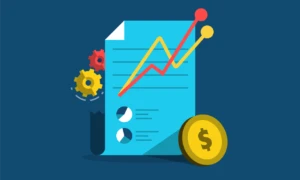
How the Connected Consumer Is Revolutionizing Field Service
In field service, as in other areas of commerce and industry, the most successful businesses are those that let their customers drive change and progress. As most field service providers recognize today, through making the metamorphosis from break-fix to more proactive, customer-centric business models, mobile service activity can turn profits and add value to sales and marketing efforts.
Your Customers as Agents of Change
As customers enjoy ever-more advanced ways to connect with service providers, so their influence on the way business is conducted increases. In fact, connectivity itself is leading consumers of field service to demand and drive change in the way providers interact with them.
It wasn’t long ago that customers had only two options to communicate in real time with service providers—the telephone and the face-to-face interaction. Now they are spoiled for choice. Your customers might still wish to communicate by phone, but they’re also just as likely to require text or real-time online chat for their interactions with your service call center, field technicians, and management team.
Because your customers want these new options, you need to provide them, or lose out to competitors that do. As a result, your customers are acting as change agents, driving your organization to improve relationships by offering the communication options that connected-consumers demand.
Promoting Self-Service
Many customers have no problem performing basic technical tasks themselves, especially if it gets their products up and running without delay. The connected-consumer of your services will get a lot of satisfaction from any self-service initiatives you introduce, such as a knowledge portal that they can access online or a technician on hand to help using real-time chat.
Initiatives like these are good for your business in a number of ways. Of course it improves the customer experience, but it can also reduce the number of instances where technicians need to go out and visit customers. This is especially beneficial if your customers receive service on a contractual basis, since you can maintain their products at lower cost than if you had to send a field technician out for every job.
Next Steps in Serving the Connected Consumer
Further connectivity-driven changes are on the horizon. The Internet of Things will remove the need for voice communications in many service scenarios. While consumers will remain connected and indeed, will become even more so, the interconnection of consumer products through machine-to-machine communication will permit detection, diagnosis, and sometimes even remediation of technical problems to take place with little, if any human intervention.
Where necessary, technicians will receive call-out service requests originating from connected products, without initiation from the products’ owners. This will not detract from the communication aspect of customer service though, since customers will receive automated notifications when technicians’ visits have been scheduled.
As the technology to support such advanced connectivity continues to develop, business customers and consumers will expect service providers to make use of it. Hence, as today, it will be connected-consumers, not industry experts or C-Suite execs that will most heavily influence the way field service evolves in the future.
Learn more about how the connected consumer is revolutionizing field service

